- Administrator
- Albums and Singles
Eastern Developments Music
 Somehow the trio (known to the world as M. Cretu, N. Gratin and O.Grouton) gained the attention of Berliner Jan Jelinek. A joint tourensued, which was noticed in turn by Prefuse 73, to whom we owe theexistence of Lost Recordings 2000-2004.Each of the eight tracks here have a unique and interesting history:the somewhat salacious and slinky "Collage of Digital Passion" and thegroovy downtempo "The Knack" were intended to accompany the televisionprograms "Abenteuer Forschung" (Adventure Research) and "ExtremeTravel," respectively; the maddeningly repetitive and mechanical loopcalled "A Machine Under Influence" was commissioned to be played atVolkswagen's Wolfsburg plant, with the thinking that such backgroundmusic would increase productivity. Lost Recordings's greatestvalue is its novelty: The Exposures have a long history in making musicin Germany—apparently it's heard on TV there all the time#151;and thisis the only collection of their music available on an album. Lost Recordingsare for the most part pleasant-sounding tunes, well-structured andformulated, and incorporating a variety of sounds, organic andincongruous alike. Still, The Exposures never rise above their jobs asbackground musicians on Lost Recordings. No one track is ableto distinguish itself above the rest: most feel half-finished, only avocal track or some creative sample away from being truly emotive orunique. The Lost Recordings are mostly blandly and boringlyinoffensive, feeling purely functional rather than soulful oremotional. Sort of like a Volkswagen, really.
Somehow the trio (known to the world as M. Cretu, N. Gratin and O.Grouton) gained the attention of Berliner Jan Jelinek. A joint tourensued, which was noticed in turn by Prefuse 73, to whom we owe theexistence of Lost Recordings 2000-2004.Each of the eight tracks here have a unique and interesting history:the somewhat salacious and slinky "Collage of Digital Passion" and thegroovy downtempo "The Knack" were intended to accompany the televisionprograms "Abenteuer Forschung" (Adventure Research) and "ExtremeTravel," respectively; the maddeningly repetitive and mechanical loopcalled "A Machine Under Influence" was commissioned to be played atVolkswagen's Wolfsburg plant, with the thinking that such backgroundmusic would increase productivity. Lost Recordings's greatestvalue is its novelty: The Exposures have a long history in making musicin Germany—apparently it's heard on TV there all the time#151;and thisis the only collection of their music available on an album. Lost Recordingsare for the most part pleasant-sounding tunes, well-structured andformulated, and incorporating a variety of sounds, organic andincongruous alike. Still, The Exposures never rise above their jobs asbackground musicians on Lost Recordings. No one track is ableto distinguish itself above the rest: most feel half-finished, only avocal track or some creative sample away from being truly emotive orunique. The Lost Recordings are mostly blandly and boringlyinoffensive, feeling purely functional rather than soulful oremotional. Sort of like a Volkswagen, really.samples:
Read More
- Lucas Schleicher
- Albums and Singles
Brainwashed
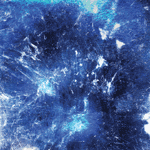 "Dolorous Echo" is a ricocheting curve ofmetallic percussion and remarkable melodies built into and on top ofone another. It's cascading mass seems to fall in slow motion as thebeats slip and spin about, circling around the reversed and chimingsynthetic tones that float slowly away at every turn. There's a denselayering of rhythmic and harmonic elements on each second of the song;the flute-like whistle that's somehow surrounded by all the otherinstruments may not be noticeable at first, but it carries a certainimportance with it as it is pushed, pulled, and resituated in the mixthroughout the song. It's like being led through a maze at high speedover and over again, until nuances and details become clear out of purerepetition. Only Hawkins is messing with me at every lap of the maze,changing the smallest details for the best effect. "The Mast" is aslowly pulsing array of telephone tones, wooden blocks, and smoothbass. Hawkins' arrangement makes the song feel as though it isvibrating in and out of existence, the extended metallic drones and therhythms shimmering in unity so that the song feels like a flashing starof bass tones and rocking-chair keyboards. It's a relaxing littlenumber that contrasts perfectly with "Dolorous Echo." It's a good thingthat pre-orders of Otologycame with a CD that included this release because within another week'stime, I would've worn the grooves out of this 7" and have wanted areplacement desperately. This is an excellent place to start becomingfamiliar with Sybarite.
"Dolorous Echo" is a ricocheting curve ofmetallic percussion and remarkable melodies built into and on top ofone another. It's cascading mass seems to fall in slow motion as thebeats slip and spin about, circling around the reversed and chimingsynthetic tones that float slowly away at every turn. There's a denselayering of rhythmic and harmonic elements on each second of the song;the flute-like whistle that's somehow surrounded by all the otherinstruments may not be noticeable at first, but it carries a certainimportance with it as it is pushed, pulled, and resituated in the mixthroughout the song. It's like being led through a maze at high speedover and over again, until nuances and details become clear out of purerepetition. Only Hawkins is messing with me at every lap of the maze,changing the smallest details for the best effect. "The Mast" is aslowly pulsing array of telephone tones, wooden blocks, and smoothbass. Hawkins' arrangement makes the song feel as though it isvibrating in and out of existence, the extended metallic drones and therhythms shimmering in unity so that the song feels like a flashing starof bass tones and rocking-chair keyboards. It's a relaxing littlenumber that contrasts perfectly with "Dolorous Echo." It's a good thingthat pre-orders of Otologycame with a CD that included this release because within another week'stime, I would've worn the grooves out of this 7" and have wanted areplacement desperately. This is an excellent place to start becomingfamiliar with Sybarite.samples:
Read More
- Lucas Schleicher
- Albums and Singles
Brainwashed
 While her live sound is more bare compared to what shedoes inside the studio, Bailiff's siren-like voice and hypnotic guitarplaying is enchanting, sounding as though it's coming through the etherfrom some far away, and sometimes sad, place. What this 7" release mostexceptionally highlights is Bailiff's song-writing ability. She writeselegantly and fluidly, pacing her music perfectly, allowing her voiceto melt into her rhythmic guitar melodies with ease. Her style iscompletely her own, but not without sympathetic and inviting tones. Shecan make me believe that she's in the room with me, whispering to meand relating stories pulled from all over the world. There's never anelement out of place in her music and each one of these four recordingsproves that she's one of the finest writers and performers around.
While her live sound is more bare compared to what shedoes inside the studio, Bailiff's siren-like voice and hypnotic guitarplaying is enchanting, sounding as though it's coming through the etherfrom some far away, and sometimes sad, place. What this 7" release mostexceptionally highlights is Bailiff's song-writing ability. She writeselegantly and fluidly, pacing her music perfectly, allowing her voiceto melt into her rhythmic guitar melodies with ease. Her style iscompletely her own, but not without sympathetic and inviting tones. Shecan make me believe that she's in the room with me, whispering to meand relating stories pulled from all over the world. There's never anelement out of place in her music and each one of these four recordingsproves that she's one of the finest writers and performers around.samples:
Read More
- Lucas Schleicher
- Albums and Singles
Brainwashed
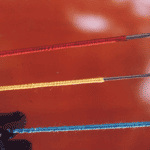 Where many of his lyrical outings have beenethereal and surrealist in many ways, for this song Aranos has comedown to earth with a definite and unmistakable message: religion, hate,and violence seem to go hand in hand. It's not a revolutionary thought,but Aranos is obviously pissed off. His delivery cannot be mistaken forsarcasm and there's no hint of metaphor nor a sign of symbolismanywhere in his words; this is a direct voice speaking exactly as itssource feels. "No Religion" feels like it should belong at a party,too, the bouncing bass and drum rhythms are joyous sounding and Aranos'slash of violin playing is upbeat and bright, betraying the seriousnessof the lyrics. I've found myself singing this on my way to work so asto pick my mood up, "I've got no religion and I'm glad, glad, glad, I'mso glad that I don't have to hate." "Spitting Revivalist Dreams ofEverlasting Pain" picks up where "No Religion" leaves off. Themechanical, sputtering sound of dying industry that closed up side Aare enhanced and pumped up a thousand-fold on side B. It's a noisetrack in every sense of the word, ringing with piercing shrieks, heavymetallic crashes, and buzzing electronics. Aranos processes thesesounds, turning the volume up, along with intensity, at some points,and letting the sounds rumble on the horizon at others. It's like asonic fit, tossing everything about the room in a sudden and fiercedisplay of absolute frustration. The intensity, at some points, isfrightening and, as the song continues to churn on, never giving up, itbecomes quite clear why this was coupled with "No Religion." Sometimestalking or singing about a feeling or idea isn't enough, sometimessound translates the ideas with such clarity that a word might spoileverything.
Where many of his lyrical outings have beenethereal and surrealist in many ways, for this song Aranos has comedown to earth with a definite and unmistakable message: religion, hate,and violence seem to go hand in hand. It's not a revolutionary thought,but Aranos is obviously pissed off. His delivery cannot be mistaken forsarcasm and there's no hint of metaphor nor a sign of symbolismanywhere in his words; this is a direct voice speaking exactly as itssource feels. "No Religion" feels like it should belong at a party,too, the bouncing bass and drum rhythms are joyous sounding and Aranos'slash of violin playing is upbeat and bright, betraying the seriousnessof the lyrics. I've found myself singing this on my way to work so asto pick my mood up, "I've got no religion and I'm glad, glad, glad, I'mso glad that I don't have to hate." "Spitting Revivalist Dreams ofEverlasting Pain" picks up where "No Religion" leaves off. Themechanical, sputtering sound of dying industry that closed up side Aare enhanced and pumped up a thousand-fold on side B. It's a noisetrack in every sense of the word, ringing with piercing shrieks, heavymetallic crashes, and buzzing electronics. Aranos processes thesesounds, turning the volume up, along with intensity, at some points,and letting the sounds rumble on the horizon at others. It's like asonic fit, tossing everything about the room in a sudden and fiercedisplay of absolute frustration. The intensity, at some points, isfrightening and, as the song continues to churn on, never giving up, itbecomes quite clear why this was coupled with "No Religion." Sometimestalking or singing about a feeling or idea isn't enough, sometimessound translates the ideas with such clarity that a word might spoileverything.samples:
Read More
- Jonathan Dean
- Albums and Singles
No Quarter
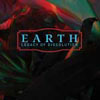 For metal fans, Earth represented an interested outsider take on thedoom and dirge of Black Sabbath and Nordic Metal. For noise andindustrial fans, Earth are simply using different tools to explore thesame territories as Merzbow or Lustmord. For a more recent and far morepretentious contingent of Wire readers and experimental musicenthusiasts, Earth is seen as a drone group, locating LaMonte Youngharmonics within the insular world of underground metal. This remixalbum, featuring reassemblies and interpolations of Earth by fellowmusicians, demonstrates these various different approaches to themusic. This disc is released at a time when Earth is making somethingof a comeback, with recent touring in Europe and the release of acouple of impressive live albums (070796LIVE and Living in the Gleam of an Unsheathed Sword). All of the remixers on Legacy of Dissolutionhave remained very respectful to the original material, simply adding afew subtle background elements, or gently nudging the mix this way orthat, rather than using Earth as raw material for entirely newcompositions. Mogwai adds backwards guitar and layers of piercingdigital chatter to "Teeth of Lions Rule the Divine," a punishingsub-bass frequency track from Earth 2, eliciting something moredynamic than the original's crushing minimalism, especially when thedroning Tony Conrad violin starts up. Merzbow collaborator RussellHaswell's take on "Tibetan Quaaludes" (subtitled "Waveset Sloth Mix"),places Earth in a digital gristle-izer, upping the noise quotient byseveral degrees, producing a churning, mud-splattered, slug-pacedexercise in audio interment. Jim O'Rourke's reassemblage of materialfrom Phase 3: Thrones and Dominions is probably my favoriteremix on the disc, gently nudging Earth's throbs and drones through hislaptop to create precise, hypnotic tones that collate over the lengthof the track. Autechre do something entirely unexpected with "CodaMaestoso in F(Flat) Minor" from Pentastar: In the Style of Demons;they leave the song almost entirely intact, only altering the levelsslightly and adding a backwards snare. Frankly, I'm relieved by thefact that Autechre decided not to do anything more ambitious with thetrack, as it was better left alone. Justin Broadrick of Godflesh addsfinishing production touches to "Harvey" that bring the track closer inspirit to the swirling, slowcore noise rock favored by My BloodyValentine and Slowdive. This will not be surprising to anyone who hasheard the Broadrick's recent debut as Jesu, which was unashamedlyderivative of the aforementioned artists. Finally, and perhaps mostsuperfluously, is Sunn O)))'s take on "Rule the Divine (MysteriaCaelestis Mugivi)." Since Sunn O))) is more-or-less an Earth tributeband, their contributions are predictably unnoticeable, though they doseemed to have focused more on the third-eye drones and less on theguitar grind. Legacy of Dissolution neatly cuts across all themodern approaches to abstract metal, and provided me with more than anhour of fascinating revisitations of hallowed Earth.
For metal fans, Earth represented an interested outsider take on thedoom and dirge of Black Sabbath and Nordic Metal. For noise andindustrial fans, Earth are simply using different tools to explore thesame territories as Merzbow or Lustmord. For a more recent and far morepretentious contingent of Wire readers and experimental musicenthusiasts, Earth is seen as a drone group, locating LaMonte Youngharmonics within the insular world of underground metal. This remixalbum, featuring reassemblies and interpolations of Earth by fellowmusicians, demonstrates these various different approaches to themusic. This disc is released at a time when Earth is making somethingof a comeback, with recent touring in Europe and the release of acouple of impressive live albums (070796LIVE and Living in the Gleam of an Unsheathed Sword). All of the remixers on Legacy of Dissolutionhave remained very respectful to the original material, simply adding afew subtle background elements, or gently nudging the mix this way orthat, rather than using Earth as raw material for entirely newcompositions. Mogwai adds backwards guitar and layers of piercingdigital chatter to "Teeth of Lions Rule the Divine," a punishingsub-bass frequency track from Earth 2, eliciting something moredynamic than the original's crushing minimalism, especially when thedroning Tony Conrad violin starts up. Merzbow collaborator RussellHaswell's take on "Tibetan Quaaludes" (subtitled "Waveset Sloth Mix"),places Earth in a digital gristle-izer, upping the noise quotient byseveral degrees, producing a churning, mud-splattered, slug-pacedexercise in audio interment. Jim O'Rourke's reassemblage of materialfrom Phase 3: Thrones and Dominions is probably my favoriteremix on the disc, gently nudging Earth's throbs and drones through hislaptop to create precise, hypnotic tones that collate over the lengthof the track. Autechre do something entirely unexpected with "CodaMaestoso in F(Flat) Minor" from Pentastar: In the Style of Demons;they leave the song almost entirely intact, only altering the levelsslightly and adding a backwards snare. Frankly, I'm relieved by thefact that Autechre decided not to do anything more ambitious with thetrack, as it was better left alone. Justin Broadrick of Godflesh addsfinishing production touches to "Harvey" that bring the track closer inspirit to the swirling, slowcore noise rock favored by My BloodyValentine and Slowdive. This will not be surprising to anyone who hasheard the Broadrick's recent debut as Jesu, which was unashamedlyderivative of the aforementioned artists. Finally, and perhaps mostsuperfluously, is Sunn O)))'s take on "Rule the Divine (MysteriaCaelestis Mugivi)." Since Sunn O))) is more-or-less an Earth tributeband, their contributions are predictably unnoticeable, though they doseemed to have focused more on the third-eye drones and less on theguitar grind. Legacy of Dissolution neatly cuts across all themodern approaches to abstract metal, and provided me with more than anhour of fascinating revisitations of hallowed Earth.samples:
- Teeth of Lions Rule the Divine (Mogwai Remix)
- Thrones and Dominions (Jim O'Rourke Remix)
- Harvey (Justin Broadrick Remix)
Read More
- Administrator
- Albums and Singles
Staubgold
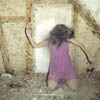 Cicadidae was a bright album, glowing in the wake of processed instruments and slow-burning songs for the lonely and contemplative; Absencenmaintains those moods, but adds a cinematic touch to the wholeexperience. The instrumentation and tasteful use of programming andprocessing gives Absencen a far more acoustic timbre. When theviolins tremble there is little in the way that impairs theinstrument's natural beauty, when the saxophone wails and cries, its asthough I'm listening to some shadowed player on a dimly lit streetcorner. There are undeniably romantic elements sprinkled all over thisalbum: almost every song is full of fluid, seductive curves that movealong peaceful percussion rhythms or stuttered, textured movements. Theband—at times—arranges the music purely by texture, preferring toeschew melodic and harmonic concerns for a purely sound-based approach."Unstet (f?r Jeffrey Lee Pierce)" is a perfect example of this. Whilethere are melodic and harmonic elements, it's obvious that the focus ofthe song is on the jumbled sax and wailing guitars that populate itssix-plus minutes. The way the music creeps and slides about gives theentire record a voyeuristic angle. It settles over everything and mademe feel as though I should be careful, watching my back at all times. Iwouldn't want to be caught in the act. Martin Siewert guests on atleast one track (specifics for guest appearances aren't provided), butit's little wonder that he was invited to play with the band.Kammerflimmer Kollektief's sound is enormous and mysterious, perfectfor the dark or the veiled and shady corners of every city.
Cicadidae was a bright album, glowing in the wake of processed instruments and slow-burning songs for the lonely and contemplative; Absencenmaintains those moods, but adds a cinematic touch to the wholeexperience. The instrumentation and tasteful use of programming andprocessing gives Absencen a far more acoustic timbre. When theviolins tremble there is little in the way that impairs theinstrument's natural beauty, when the saxophone wails and cries, its asthough I'm listening to some shadowed player on a dimly lit streetcorner. There are undeniably romantic elements sprinkled all over thisalbum: almost every song is full of fluid, seductive curves that movealong peaceful percussion rhythms or stuttered, textured movements. Theband—at times—arranges the music purely by texture, preferring toeschew melodic and harmonic concerns for a purely sound-based approach."Unstet (f?r Jeffrey Lee Pierce)" is a perfect example of this. Whilethere are melodic and harmonic elements, it's obvious that the focus ofthe song is on the jumbled sax and wailing guitars that populate itssix-plus minutes. The way the music creeps and slides about gives theentire record a voyeuristic angle. It settles over everything and mademe feel as though I should be careful, watching my back at all times. Iwouldn't want to be caught in the act. Martin Siewert guests on atleast one track (specifics for guest appearances aren't provided), butit's little wonder that he was invited to play with the band.Kammerflimmer Kollektief's sound is enormous and mysterious, perfectfor the dark or the veiled and shady corners of every city.samples:
Read More
- Joshua David Mann
- Albums and Singles
 Munk's fascinationwith all things tropical or celestial has not diminished, as Manual'smusic captures the sound of laying out on the beach in your best swimtrunks and Def Leppard cut-off shirt. Songs are saturated with the samesynthesized sound which drenched the 1980s new wave pop movement. Munk,however is careful to add his own unique fringes of electronic eddiesand whirlpools to the music. He is infatuated with the way stars soundif they fell to earth and danced gently on the ocean. "Summer ofFreedom" has a measured and thumping prelude (replete with clappingsounds) to the ultimate supernova of exploded synthesizers which thenebbs back into the prelude theme only to explode once again. There areabout four catharses in this 11-minute song alone and they all feelreally good. The third quarter of the song devolves into a more quietand ruminative state before gathering up its strength for one lastcelebration by the end. There are two classes of songs here: thosewhich are paced and progress ("Summer of Freedom" and "Neon Reverie")and others which simply swirl atmospherically and go nowhere("Tourmaline" and "Azure Vista"). I find the progressive songs moreinteresting and I get lost amidst the cosmic dust of the swirling ones."Clear Skies Above the Coastline Cathedral" spans both types of songs.On the one hand, the melody is fairly static and there is not muchdevelopment in the themes. On the other hand, a handful of other soundsdance around the leitmotif and it builds and swells along with theseinstruments. So there is a progression, yet is always tethered to acentral locus. Also, there is the obligatory sound of ocean waves atthe beginning. Azure Vista would make a properly complementary soundtrack to a sentimental 1980s film like the estimable Andrew McCarthy romp Mannequin,if that film were set on the beach and excised that horrid Starshipsong from the credit titles. Actually, perhaps McCarthy's Weekend at Bernie's(with its appropriate beach setting) could be used to make an amalgamof the two and then add Manual's music as the score. The delightful"Neon Reverie" would make a particularly inspired choice for an endscene fade-out. Additionally, the album's cover is indicative of thesound. A double-exposed beachfront Californian dusk with saffron lightsmixing with azure skies, all impacted by darkly-jutting palm trees. Itlooks particularly lush and candy-colored, just as the music can beboth sweet and ephemeral, unable to stick to the roof of your mouth forvery long. Musically and visually, this album is the cotton candy ofManual releases.
Munk's fascinationwith all things tropical or celestial has not diminished, as Manual'smusic captures the sound of laying out on the beach in your best swimtrunks and Def Leppard cut-off shirt. Songs are saturated with the samesynthesized sound which drenched the 1980s new wave pop movement. Munk,however is careful to add his own unique fringes of electronic eddiesand whirlpools to the music. He is infatuated with the way stars soundif they fell to earth and danced gently on the ocean. "Summer ofFreedom" has a measured and thumping prelude (replete with clappingsounds) to the ultimate supernova of exploded synthesizers which thenebbs back into the prelude theme only to explode once again. There areabout four catharses in this 11-minute song alone and they all feelreally good. The third quarter of the song devolves into a more quietand ruminative state before gathering up its strength for one lastcelebration by the end. There are two classes of songs here: thosewhich are paced and progress ("Summer of Freedom" and "Neon Reverie")and others which simply swirl atmospherically and go nowhere("Tourmaline" and "Azure Vista"). I find the progressive songs moreinteresting and I get lost amidst the cosmic dust of the swirling ones."Clear Skies Above the Coastline Cathedral" spans both types of songs.On the one hand, the melody is fairly static and there is not muchdevelopment in the themes. On the other hand, a handful of other soundsdance around the leitmotif and it builds and swells along with theseinstruments. So there is a progression, yet is always tethered to acentral locus. Also, there is the obligatory sound of ocean waves atthe beginning. Azure Vista would make a properly complementary soundtrack to a sentimental 1980s film like the estimable Andrew McCarthy romp Mannequin,if that film were set on the beach and excised that horrid Starshipsong from the credit titles. Actually, perhaps McCarthy's Weekend at Bernie's(with its appropriate beach setting) could be used to make an amalgamof the two and then add Manual's music as the score. The delightful"Neon Reverie" would make a particularly inspired choice for an endscene fade-out. Additionally, the album's cover is indicative of thesound. A double-exposed beachfront Californian dusk with saffron lightsmixing with azure skies, all impacted by darkly-jutting palm trees. Itlooks particularly lush and candy-colored, just as the music can beboth sweet and ephemeral, unable to stick to the roof of your mouth forvery long. Musically and visually, this album is the cotton candy ofManual releases.samples:
Read More
- Jim Siegel
- Albums and Singles
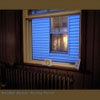 The opening "Shore" is contemplative in tone, withlayers of buzzing and shimmering tones weaving steadily in and out ofthe mix. "Garden" is less linear, with several different sections thatgradually develop over 12 minutes. The short, sudden jolt of noise thatoccurs at one and a half minutes sounds like the equivalent of aflashback scene in a film. The relatively quiet sections ofinterlocking tones that follow this outburst then carry a heavy senseof tension, as the sounds of past memories could again interrupt thesequence at any time. Murray successfully fuses digital processing witha warm, human touch throughout the set. Six minutes into "Garden" anarray of clanging, arrhythmically struck metal percussion is heardamidst the floating tones that gradually build to a steady drift untila section of shrill, piercing feedback brings the piece to a close."Bed" begins with a collage of beautifully hazy bell tones, which giveway to a passage during which Murray can be heard rubbing small bits ofmetal together. The length of these tracks (each between 10 and 17minutes) allows him to fully explore each sound before morphing it intosomething else. He clearly brings a musician's sense of composition tothe world of abstract, rhythmless sound. This intuitive sense ofarranging and a keen use of dynamics helps the album to remain excitingalthough a very specific palette of sounds is utilized. "Tomb" is themost dense composition, with several layers of audio muck to wadethrough. It's a true culmination of all of the elements used in thepreceding three tracks. The high-pitched squeals wind their way througha steady onslaught of digital detritus as Murray piles on the layers.If he is ruminating on the possibly permanent nature of the tomb as a finalresting place, his reading of it seems to be a celebration of all thathas come before this state, rather than a morbid reflection of deathitself. By juxtaposing the meditative tones of "Shore" with thepeaceful, womb-like environment evoked in the first half of "Bed" andthe sheer catharsis of "Tomb"'s exorcism through noise, Murray haspresented a thorough and highly enjoyable study of an eternal subject.
The opening "Shore" is contemplative in tone, withlayers of buzzing and shimmering tones weaving steadily in and out ofthe mix. "Garden" is less linear, with several different sections thatgradually develop over 12 minutes. The short, sudden jolt of noise thatoccurs at one and a half minutes sounds like the equivalent of aflashback scene in a film. The relatively quiet sections ofinterlocking tones that follow this outburst then carry a heavy senseof tension, as the sounds of past memories could again interrupt thesequence at any time. Murray successfully fuses digital processing witha warm, human touch throughout the set. Six minutes into "Garden" anarray of clanging, arrhythmically struck metal percussion is heardamidst the floating tones that gradually build to a steady drift untila section of shrill, piercing feedback brings the piece to a close."Bed" begins with a collage of beautifully hazy bell tones, which giveway to a passage during which Murray can be heard rubbing small bits ofmetal together. The length of these tracks (each between 10 and 17minutes) allows him to fully explore each sound before morphing it intosomething else. He clearly brings a musician's sense of composition tothe world of abstract, rhythmless sound. This intuitive sense ofarranging and a keen use of dynamics helps the album to remain excitingalthough a very specific palette of sounds is utilized. "Tomb" is themost dense composition, with several layers of audio muck to wadethrough. It's a true culmination of all of the elements used in thepreceding three tracks. The high-pitched squeals wind their way througha steady onslaught of digital detritus as Murray piles on the layers.If he is ruminating on the possibly permanent nature of the tomb as a finalresting place, his reading of it seems to be a celebration of all thathas come before this state, rather than a morbid reflection of deathitself. By juxtaposing the meditative tones of "Shore" with thepeaceful, womb-like environment evoked in the first half of "Bed" andthe sheer catharsis of "Tomb"'s exorcism through noise, Murray haspresented a thorough and highly enjoyable study of an eternal subject.samples:
Read More
- Lucas Schleicher
- Albums and Singles
ICR
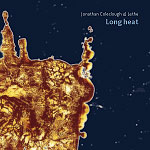 Kuwayama Kiyoharu, otherwise known as Lethe, andJonathan Coleclough construct a fairly ominous set of sounds, one ontop of the other, until they produce the sound of music burning.Crackling, sticks snapping, and slowly detuned winds flow through aseries of almost indefinable transitions; each new sound ushers in anew palette and a fresh movement. Sounding almost like a variation on atheme, the duo slowly allows an intensity to build, never reallyletting go and simply adding intriguing sounds as they move along,almost as though they were eager to drop the old ones as quickly aspossible. At around the 21 minute mark, the atmosphere begins to spiralout of a control ever so slightly: the clanking of metal, the sounds ofbirds chirping, and the endless wail of synthetic tones grows over itsown container and sounds more and more threatening with every passingsecond. There's almost never any doubt that anything released byColeclough is going to be good, but not since his work with ColinPotter on Low Ground has his work felt this powerful.Lethe's contribution may have something to do with this, butunfortunately there are no details provided on the packaging in regardsto who contributed what and how. There are two editions of this releaseavailable. One is a single disc edition and the other is a two-discedition limited to 250 copies and available only through ICRDistribution. There's little reason not to own this; the fevered pitchthis album reaches and it's beautiful, destructive aftermath exceed anydescription that might be applied.
Kuwayama Kiyoharu, otherwise known as Lethe, andJonathan Coleclough construct a fairly ominous set of sounds, one ontop of the other, until they produce the sound of music burning.Crackling, sticks snapping, and slowly detuned winds flow through aseries of almost indefinable transitions; each new sound ushers in anew palette and a fresh movement. Sounding almost like a variation on atheme, the duo slowly allows an intensity to build, never reallyletting go and simply adding intriguing sounds as they move along,almost as though they were eager to drop the old ones as quickly aspossible. At around the 21 minute mark, the atmosphere begins to spiralout of a control ever so slightly: the clanking of metal, the sounds ofbirds chirping, and the endless wail of synthetic tones grows over itsown container and sounds more and more threatening with every passingsecond. There's almost never any doubt that anything released byColeclough is going to be good, but not since his work with ColinPotter on Low Ground has his work felt this powerful.Lethe's contribution may have something to do with this, butunfortunately there are no details provided on the packaging in regardsto who contributed what and how. There are two editions of this releaseavailable. One is a single disc edition and the other is a two-discedition limited to 250 copies and available only through ICRDistribution. There's little reason not to own this; the fevered pitchthis album reaches and it's beautiful, destructive aftermath exceed anydescription that might be applied. samples:
Read More
- Jonathan Dean
- Albums and Singles
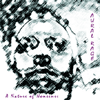
Aural Rage
Even amongsome of Coil's most zealous advocates, works like "Windowpane" and "TheSnow" are considered somewhat aberrant, their adherence to then-currenttechno norms seemed a deliberate step into the mainstream, not astrategy for which Coil are generally known. Much of this fixation onthe reconfiguration of dance music was brought to the group by DannyHyde, so it should come as no surprise that his debut solo album A Nature of Nonsensesounds a lot like that phase when Coil seemed to be spending a lot oftime tripping at London discos. Those dark, synthetic strings,programmed rhythms, shuddering MDMA-filtered beats, acid gurgles andinsect buzzes are all over the album. Unfortunately, this means thatthe album sounds a bit uniform and dated in the same way as "The Snow"does now. Also, like many talented engineers who create their ownmusic, Danny Hyde seems overly dependent upon the gear and software heuses, producing many tracks that sound more like in-store demos forelectronic music gizmos than they do like fully-realized songs. Hyde'smaximalist approach, with a dense beatscape overpopulated with layersof samples and sonic detail, recalls The Orb and Meat Beat Manifesto,only not as polished or interesting. This is something of adisappointment coming from someone who worked on such stunning Coiltracks as "First Dark Ride" and "Nasa Arab." Aural Rage turns in itsown interpolation of the latter track with "Nasahara Arab," a pointlessrefabrication of the original that adds layers of unnecessary busy-nessto the track. Another reinterpreted Coil track fares slightly better,the noisy forward momentum of "Unhealthy Red," based on the Coil piece"Unearthly Red" from Live Four. Two tracks featuring vocals bythe late Jhonn Balance are strong points for the album, thoughBalance's voice sounds incongruous placed amid hyperactive compositionsfilled to bursting with extraneous sound effects. On "FJ Nettlefold,"Balance performs a remarkably possessed vocal, but Hyde miscalculatesby overprocessing and adding Dead Can Dance female backing vocals thatsound ludicrous in this context. Still, it's wonderful to hear Balanceagain, in whatever form. Hyde seems to enjoy a good bit of humor,whether it's Stephen Hawking's computer voice proclaiming "Physics isall very good, but me, I'd rather get wood," or a cut-up of everyone'sfavorite tyrant George W. Bush on "Dubya Does One." Problem is, thesegags visit well-worn territory, and in the case of "A Nutter at Radio3," the jokes are just plain stolen, uncredited, from Trunk Records' Dirty Fan Male.I don't want to be overly cruel to an album that is plainly a verysincere DIY enterprise, but from the rather ho-hum name of the projectdown to the hack-job sleeve artwork, A Nature of Nonsense suffers from a dearth of actual ideas, not an uncommon problem for music made by engineers rather than artists.
samples:
Read More
- Administrator
- Albums and Singles
Alien Transistor (DE) / Anticon (US)
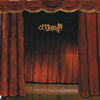 The fact that 13+God isentirely listenable (one needs granite ears for much of Themselves'music) from start to finish seems to indicate that the famouslyfreewheeling Themselves chose to adhere to a more Notwist-friendlyframework, if not working subordinately. Either way, the formula worksperfectly and equally: harmonious, hummable radio-ready tunes as wellas rambling, bizarrely epic tracks are created, and the above noteaside, it's not immediately apparent who wrote or performed what. Thereare moments of dominance: the lead single "Men of Station" reeks ofTeutonic influence, replete with Markus Acher's trademarkspoken-chanted vocals and Themselves relegated to background noises;the closing track "Walk" is similar to the messily intense cuts foundon producer Jel's Meat and Oil EP. Otherwise, the six verydifferent musicians have achieved a near-perfect balance of Europeanelectronic pop and American avant-rap. Neon Golden-worthy percussionand harmonization compete with the best No Musicbeat-poet stream of consciousness vie for position, neither winning outbut instead creating an inventive and original-sounding record. Thecollaboration also has the novelty of minimizing its flaws: when thevocals drone on, inducing slumber, a heavy backbeat will raise theenergy; and the structure and harmonization keep otherwise etherealvocalization grounded. Fans of Themselves may be disappointed that13+Godis too accessible to the plebian public and not jarring or discordantenough, and Notwist aficionados may be annoyed with Themselves formaking such nonsensical noises over an otherwise perfectly-orderedMartin Grestchmann arrangement, but such attacks are Phillistinic.13+God has upped the ante for cross-genre collaborations and met orexceeded all of its lofty expectations.
The fact that 13+God isentirely listenable (one needs granite ears for much of Themselves'music) from start to finish seems to indicate that the famouslyfreewheeling Themselves chose to adhere to a more Notwist-friendlyframework, if not working subordinately. Either way, the formula worksperfectly and equally: harmonious, hummable radio-ready tunes as wellas rambling, bizarrely epic tracks are created, and the above noteaside, it's not immediately apparent who wrote or performed what. Thereare moments of dominance: the lead single "Men of Station" reeks ofTeutonic influence, replete with Markus Acher's trademarkspoken-chanted vocals and Themselves relegated to background noises;the closing track "Walk" is similar to the messily intense cuts foundon producer Jel's Meat and Oil EP. Otherwise, the six verydifferent musicians have achieved a near-perfect balance of Europeanelectronic pop and American avant-rap. Neon Golden-worthy percussionand harmonization compete with the best No Musicbeat-poet stream of consciousness vie for position, neither winning outbut instead creating an inventive and original-sounding record. Thecollaboration also has the novelty of minimizing its flaws: when thevocals drone on, inducing slumber, a heavy backbeat will raise theenergy; and the structure and harmonization keep otherwise etherealvocalization grounded. Fans of Themselves may be disappointed that13+Godis too accessible to the plebian public and not jarring or discordantenough, and Notwist aficionados may be annoyed with Themselves formaking such nonsensical noises over an otherwise perfectly-orderedMartin Grestchmann arrangement, but such attacks are Phillistinic.13+God has upped the ante for cross-genre collaborations and met orexceeded all of its lofty expectations.samples:
Read More

